A question I get asked a lot by prospective guests. My short answer would be that most yoga retreat weeks are suitable for most people as these weeks offer so much more than just the creative pretzeling on the mat.
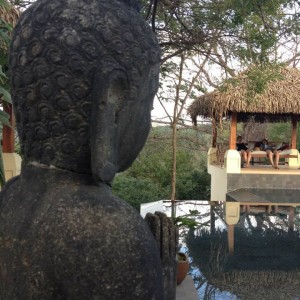 Yoga retreats are a great way to travel the world
Yoga retreats are a great way to travel the world
Yoga retreats offer incredible venues, healthy cuisine, interesting international people and an immersion into yoga and mindfulness that will continue to add peace and happiness to your daily life.
At Revealing Vajra, we make travel easy for you as everything will be included in one price. We pride ourselves with the slogan that you can leave your wallet @ home! From the minute you arrive at the airport, everything will be handled for you in order for you to simply relax and enjoy.
Quality and experienced teachers are one key to great yoga holidays – their care and understanding should make their particular style accessible and enjoyable to all. Having said this, certain styles and retreats may appeal to different people.
Different styles for different people
In our weeks, we offer different styles, depending on the joining teacher(s) . Just because there are so many different styles these days and it’s easy to get lost in the terminology of yoga land.
Our idea is, that after a yoga holiday, you will have the confidence to step into any class that is offered at your local yoga studio and you will not be surprised. Better yet, you will know most of the poses they do and you will be able to follow all classes as you know how to stay within your limits and feel your body. You’ll even understand some of the Sanskrit words that a lot of teachers use!
To give you a brief understanding of the most common styles, we have listed a few below.
Ashtanga yoga
Ashtanga Yoga is one of the most physically demanding styles of yoga. It is set sequences of poses, either led by the teacher or taught Mysore style. In the Mysore method everyone works through a set sequence in their own time holding each position for 5 breaths, receiving help from the teacher as needed. Depending on the teacher, Ashtanga yoga retreats can be tough and a reasonable level of fitness would be a plus.
Vinyasa yoga
Vinyasa Yoga owes its flowing movements supported by the breath to Ashtanga. Each class is different and some people really enjoy the variety of yoga poses. Some teachers are very creative; others stick to more well known poses. Each pose has variations so that those who are more/less flexible or strong can benefit from going as far as they are comfortable with, in a safe way – it should be a fun, but challenging, yoga style. Vinyasa builds strength and flexibility and suitable for those who are willing to move.
Prana Flow Yoga
A popular form vinyasa flow yoga is Shiva Rea’s Prana Flow Yoga. This uplifting yoga works towards a free style flow which she calls trance dance. In 2014, we will have Myrna Van Kemenade, who was personally trained by Shiva Rea, joining us on our yoga retreats in Ibiza and Mexico.
We usually fit in the Trance Dance yoga lesson at the end of our retreat week. Some people are somewhat hesitant at the beginning but it usually ends with a genuine club morning at the retreat with good music and a lot of fun!
Hatha yoga
In Hatha Yoga , the postures are steadier and can be held a little longer. Though not as physically tough (usually!) as ashtanga, it reaches deep levels, gently opening you up physically and releasing stress from the body and mind.
To be theoretically correct here, I should add that all yoga classes which an emphasize on the asanas, fall under the umbrella of Hatha yoga. In the West however, we usually see hatha yoga as a gentle practice, where we focus on asanas, pranayama (breathing techniques) and a short meditation.
Laura Fisher is a hatha yoga teacher and I’m thrilled she will join our Italy retreat at In Sabina, in the week from August 16-23.
Iyengar Yoga
Iyengar Yoga gives much more emphasis to the details and alignment in the poses. Often poses are held for a longer time and a LOT of props are used. Props being bolsters, blocks, belts, chairs, blankets, etc.
In June we had Susannah Tomkins from the Yogaloft in London leading a retreat in Italy.
Kundalini yoga
Without a doubt, Kundalini Yoga is one of my favorite yoga styles. It combines powerful breathing techniques, postures, mudras (hand positions), mantras (chanting) and meditations to help you unlock your true potential and experience your highest consciousness.
Kundalini Yoga was introduced to the US in 1968 by Yogi Bhajan and is also known as the yoga of awareness. Kundalini yoga can be extremely confronting as asanas/exercises are done for a long, long …. (did I mention loooong?) long time.
The energy that you get after class though is just pure bliss. As in many classes, the teacher is crucial in Kundalini, not only to keep a close eye on everyone, but also to talk the students through their suffering…
I noticed that cracking a few jokes here and there, singing, and putting the volume of the music up tends to work best. We have at least one Kundalini class in our schedule on all our retreats, as this is too much fun not to experience it, at least once in your life.
Yin yoga
Yin yoga is a slow-paced style of yoga with poses or asanas that are held for longer periods of time, 5 minutes or longer per pose is typical. The poses apply moderate stress to the connective tissues with the aim of increasing circulation in the joints and improving flexibility.
Yin yoga can be very satisfying but also very challenging for many as, a little like in meditation, you resist the urge to move. And trust me, after 3 minutes in happy baby pose? You want to move as happy is just about to become cranky…
Sattva Yoga
Unless you’re based in Chile or Brazil, you will probably not find Sattva yoga at your local studio.
After many years of study with Pattabhi Jois, B.K.S. Iyengar and many more Indian teachers, Gustavo Ponce has developed his own style of yoga. Sattva yoga means balance and harmony, which promotes physical and energetic symmetry, corrects chronic back problems, optimizes the function of internal organs and increases muscular tone thereby enhancing flexibility.
This method emphasizes the opening of the hips and the stabilization of the spine and can be practiced in a flowing manner (sattva vinyasa), using the wall (sattva chikitsa) or with a partner.
“The wall has no pity”, is a phrase one can often hear in Gustavo’s classes so do not expect a walk in the yoga park when attending these lessons. The Sattva Chikitsa lessons will help you in feeling the correct alignment in each and every pose but you will also meet your limits when it comes to stamina and flexibility.
Dates haven’t been fixed yet as Gustavo is travelling and teaching in Europe but we are hoping to have him with us on several retreats this year.
What makes yoga different from gymnastics
I have made it my personal mission to bring across the message that while all the above is great, all of the above also just focuses on one aspect of what yoga can be. I’m not judging but we might just be a little body-obsessed in our Western world and the physical seems to be the only thing we usually we focus on.
And I want to change that 😉
For me, yoga is also about learning how to do yoga when you’re off the mat and out in the world.
In one of my previous blogs I wrote about Yamas and Niyamas, two aspects of yoga that can truly change your life when applied – or at least when you’re conscious of them in your daily actions.
On the retreats and in my yoga inspired life coaching sessions in Antwerp, I really zoom into these aspects . Herewith just some questions to arouse some interest in that “other part” of yoga…
What good is it to be super flexible on your mat and to be a control freak with no flexibility whatsoever in your daily life? My blog on how to control your inner control freak, gives you some advice on this one.
How non violent are you when you’re constantly pushing yourself on the mat and comparing yourself to others in class?
Can you find true joy and happiness in where you are regardless of any external circumstances?
How often do you practice gratitude for what you have?
Merely answering these questions and giving them some thought is practising yoga. Easy, no?
If you have any questions about this blog or about our yoga retreats, please feel free to write and tell us what you are looking for. If we think we don’t offer what you are looking for, we’ll be happy to direct you to one of our fellow retreat organizers.
Hopefully, at some point in the future you’ll get the opportunity to experience an amazing yoga retreat!
Namaste,
Rachel

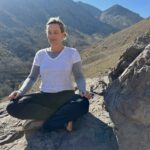

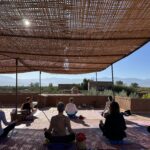

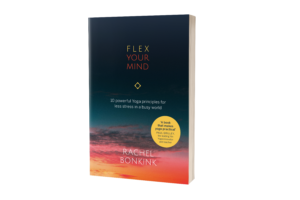
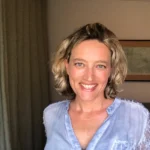

Leave a comment